Fall is one of the busiest and most important seasons on the homestead.
The garden is winding down, cooler days make outdoor work easier, and winter is just around the corner.
It’s the perfect time to build practical skills that help you stay prepared, productive, and comfortable through the colder months.
Whether you’re preserving the harvest, stocking firewood, or planning next year’s layout, the work you do now sets the tone for the months ahead.
In this article, you’ll find 10 useful homesteading skills to focus on this fall – ones that match the season and keep your homestead running smoothly.
10 Homestead Skills to Focus On This Fall
As the season shifts, fall becomes the perfect time to sharpen a few core homestead skills that make winter smoother and more self-sufficient.
These are the areas worth focusing on right now, while the weather is cool and the workload is steady instead of frantic.
1. Food Preservation to Carry You Through Winter

Fall is the time when gardens, fruit trees, and farmers' markets are overflowing.
It’s also when food preservation matters most. By putting up food now, you’ll avoid waste and have a pantry full of homemade staples to use through the winter.
There are a few simple ways to start:
- Water-bath canning is great for high-acid foods like apple butter or applesauce.
- Freezing produce works well for things like chopped peppers or blanched greens.
- Drying herbs is quick, uses minimal equipment, and gives you plenty to cook with all year – especially if you already know how to dry herbs naturally.
If you’re ready to go beyond the basics, this season is ideal for pressure canning broths, soups, or stews.
These meals are shelf-stable, save freezer space, and are useful during power outages. Mastering this one skill not only saves money but also helps you rely less on grocery trips.
2. Baking with What’s in Season

Fall baking is more than comfort food – it’s a way to make use of seasonal harvests while keeping meals simple and nourishing.
Apples, pumpkins, and squash are often available in bulk, and baking is one of the best ways to stretch their use.
Try basic recipes like:
- Pumpkin muffins using fresh or canned pumpkin.
- Apple crisps with simple pantry ingredients.
- Hearty breads made with grated squash or leftover mashed sweet potatoes.
These baked goods store well, fill your kitchen with warmth, and make good use of what you likely already have on hand.
If you’re looking to slow down and cook more at home, this is one of the most approachable skills to work on during the fall.
3. Getting Animals Ready for Cold Weather
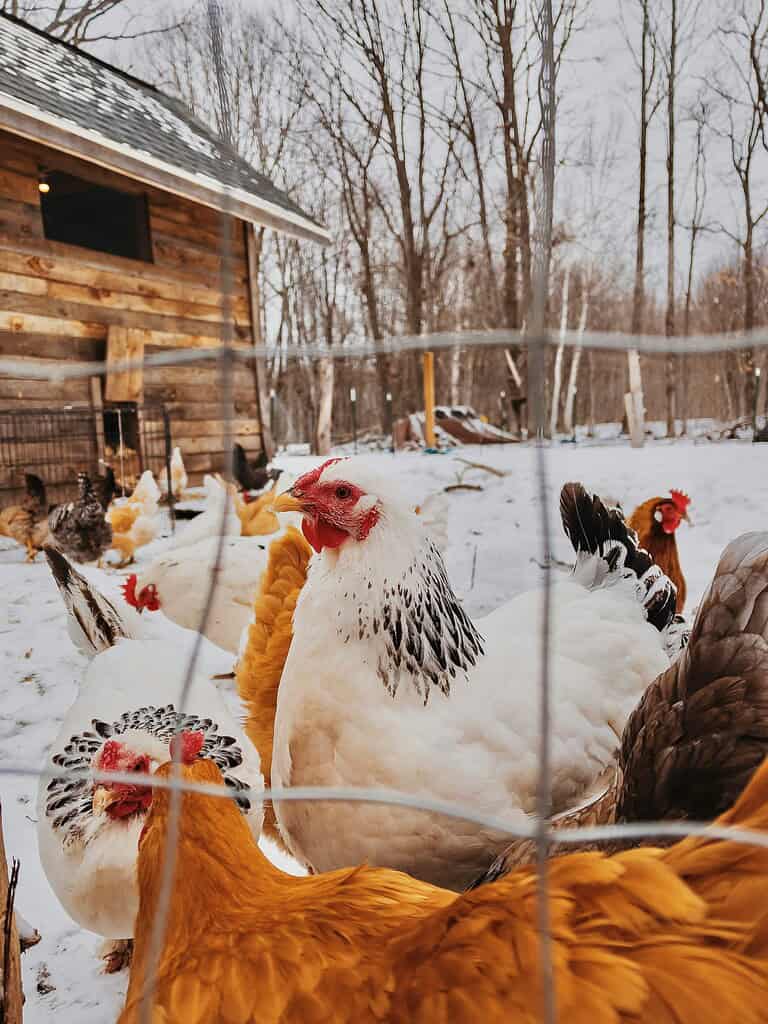
If you raise animals, fall is a key time to make sure they stay healthy and safe during the colder months.
Waiting until winter hits makes everything harder – frozen water, drafty shelters, and health issues become more difficult to manage.
Start with the basics:
- Repair any damage to coops, barns, or hutches so there are no leaks or cold drafts.
- Stock up on bedding like straw or wood shavings to keep animals warm and dry.
- Store feed properly in dry, rodent-proof containers to last through winter.
For beginners, this is also a good season to learn small but important tasks. Trimming hooves, especially for goats, prevents problems when animals are less active.
Learning how to spot signs of illness in animals like rabbits or chickens can also help you catch issues early, before the cold makes them worse.
Doing this work now means your animals are more comfortable, and you’ll deal with fewer problems when the weather turns harsh.
For tips on protecting your goats as temperatures drop, check out how to keep goats warm in winter.
4. Chopping and Storing Firewood
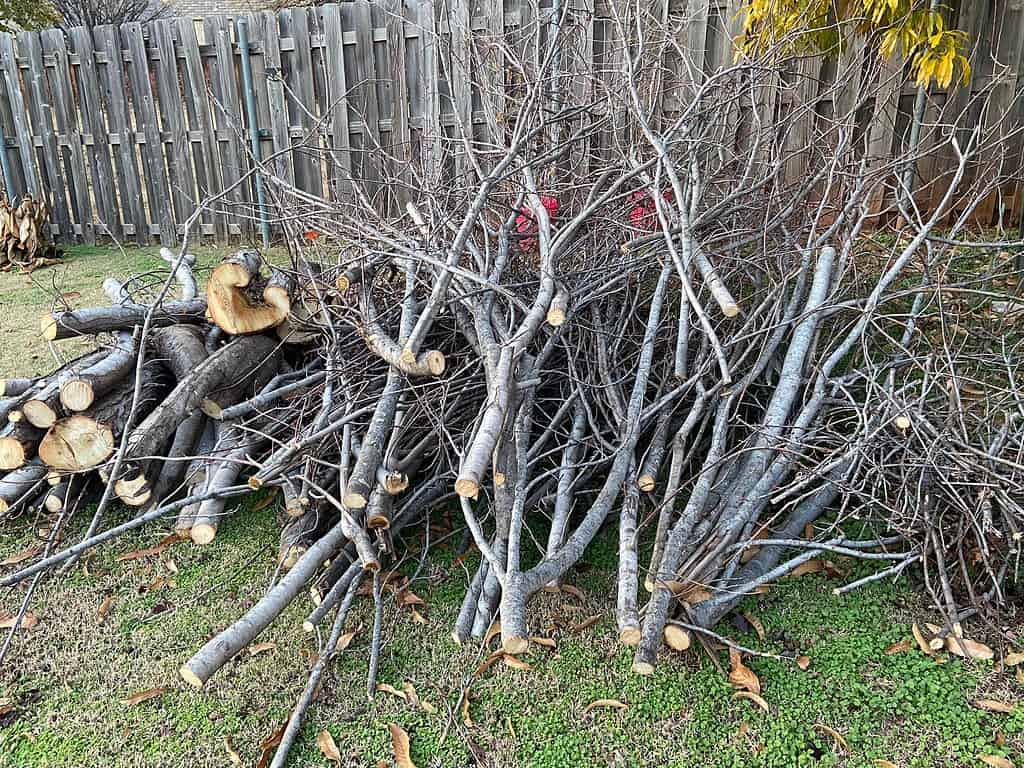
For homesteads that rely on wood heat, firewood is more than just a backup – it’s a primary source of warmth.
Fall is the time to get serious about cutting, stacking, and storing enough wood to last through winter.
Start by knowing your wood:
- Hardwoods like oak, maple, or hickory burn hotter and longer.
- Softwoods like pine burn fast and are better for kindling, but not for overnight heat.
Once cut, firewood needs to be properly seasoned. That means it’s been split and stacked in a way that allows airflow and time to dry – usually at least 6 to 12 months.
Well-seasoned wood burns cleaner and reduces creosote buildup in your stove or chimney.
Make sure your wood is:
- Stacked off the ground
- Covered on top but open on the sides
- Stored near the house before snow makes it harder to access
If you’re just starting out, even learning how to safely use a maul or axe, or understanding how much wood your household needs per week, is a solid step forward.
5. Saving Seeds from the Garden
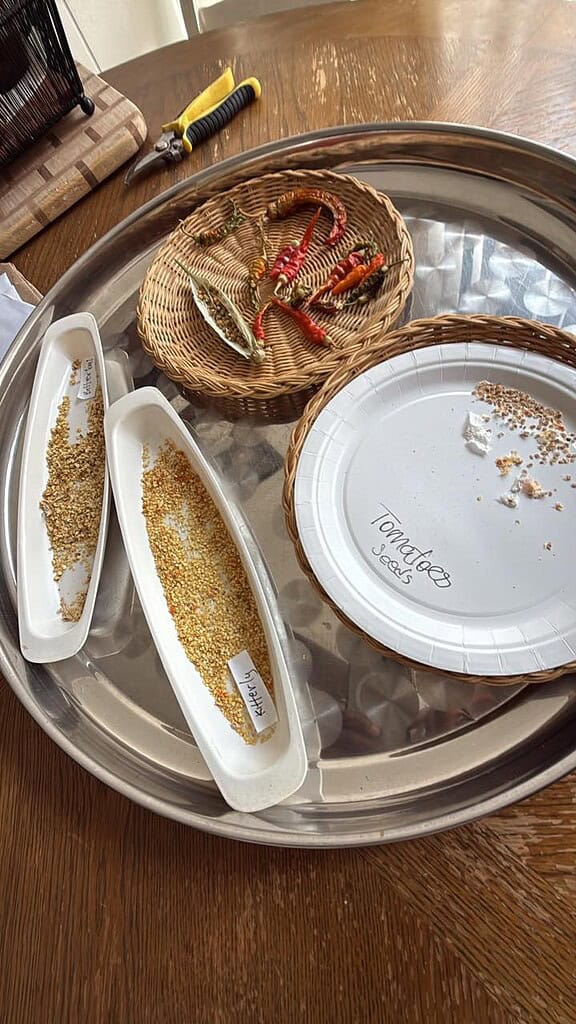
As the garden winds down, seed saving is a simple way to keep your favorite plants going year after year without buying new packets each spring.
It’s a practical, low-cost habit that builds long-term self-reliance.
Good plants for beginners include:
- Tomatoes – easy to ferment and dry.
- Beans – just dry them fully on the vine and shell them.
- Herbs – like dill or basil, which often go to seed on their own.
To get started:
- Let the plant fully mature and dry on the stalk (or vine).
- Remove seeds and let them dry fully in a cool, dry place.
- Label and store them in paper envelopes or glass jars in a dark, cool space.
Fall is the only time to save seeds from many summer crops, so it’s worth setting aside time before pulling out the garden.
Even saving a small batch teaches you how the seed cycle works – and gives you one less thing to buy in the spring.
Looking for high-quality seeds or something new for next year? See my list of trusted seed companies.
6. Making Simple Soaps or Candles
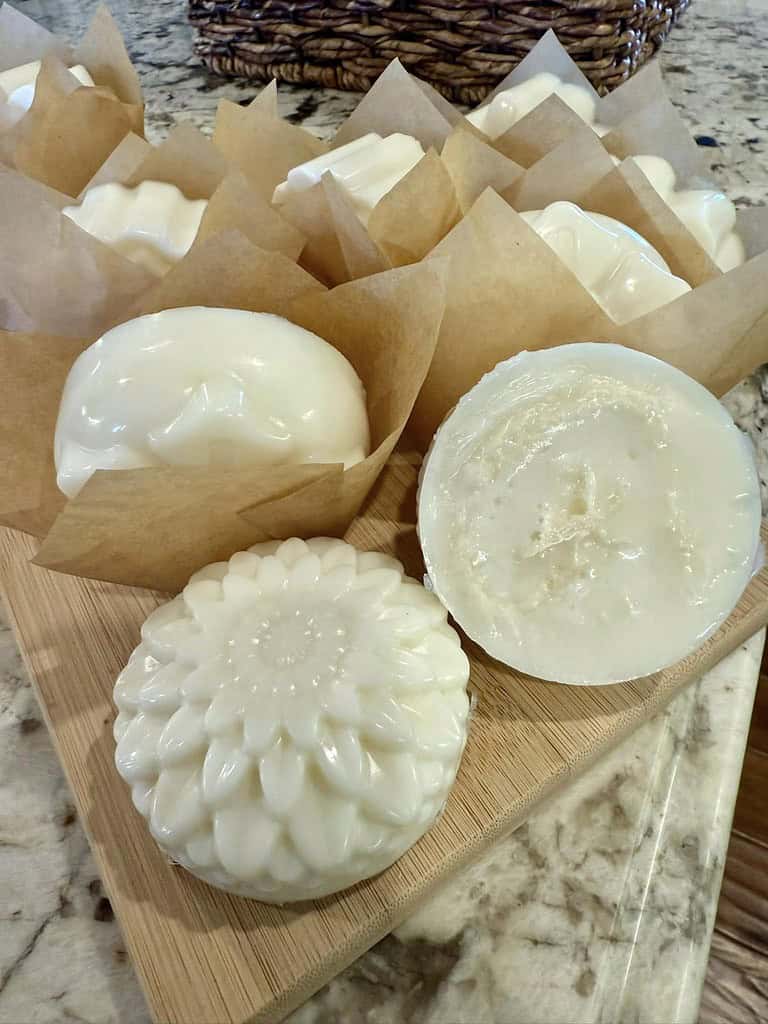
When the days get shorter and you’re spending more time indoors, it’s a good chance to learn hands-on skills like soap or candle making.
These are quiet, useful tasks that don’t take much space and result in items you can use daily or give as gifts.
A good place to start is:
- Beeswax candles – You just need jars, wicks, and wax.
- Cold-process soap – Made from basic oils, lye, and water.
Both skills connect back to older homestead traditions of making what you need at home.
You don’t need fancy molds or equipment to get started – just the right materials and some basic safety steps (especially when working with lye).
Doing this work in the fall also lines up with the season. You’re indoors more, supplies are still easy to order or find locally, and it gives you something productive to do when the garden slows down.
If you’d like a simple place to start, check out my easy tallow soap recipe.
7. Planning Ahead for Next Year’s Garden

Fall is a natural time to step back and look at the big picture. Before snow covers everything, it helps to review what went well this year and where things could improve.
Some helpful things to do:
- Walk through the garden and take notes on what grew well or failed.
- Think about adding new features like a compost system, more perennial herbs, or a rabbit hutch you can build yourself.
- Sketch a rough plan for your layout next spring.
This is also when you can catch mistakes while they’re still fresh in your mind.
Maybe you planted too much of one crop or didn’t have enough room to rotate beds. A few simple notes now will save time and frustration when planting season comes back around.
It’s less about having the perfect plan and more about thinking ahead while the year is still fresh in your memory.
8. Preparing the Garden for Winter and Protecting the Soil

Once the main harvest is done, it’s important to clean up the garden so it’s ready for rest and recovery over winter.
Leaving old plants to rot in place can lead to pests and disease problems in the spring.
Start by:
- Pulling dead plants and weeds – compost healthy ones, discard anything diseased – also gives you a chance to set up natural methods to prevent weeds from growing next season.
- Adding mulch – straw, leaves, or wood chips help protect the soil and hold in moisture.
- Planting cover crops – like rye or clover, to prevent erosion and improve soil structure.
If you’ve got compost or manure, fall is a good time to spread it lightly across garden beds.
It will break down over the winter and be ready by spring. This kind of quiet soil-building work doesn’t take much time now, but it makes a big difference when planting season rolls around.
9. Taking Care of Tools Before Winter

Tools that sit dirty or damp over the winter can rust, crack, or wear out before spring.
Fall is the right time to clean and store them properly so they last longer and work better when you need them again.
Start with:
- Cleaning off dirt and sap using a wire brush or rag.
- Sharpening blades on pruners, shears, hoes, and shovels.
- Oiling metal parts to prevent rust – linseed oil works well for wood handles too.
Once they’re clean, keep tools in a dry, covered area like a shed or garage. Hanging them or keeping them off the ground helps avoid moisture damage.
This kind of upkeep doesn’t take long but saves you from having to replace tools or struggle with dull edges when spring projects start up again.
If you’re stocking or upgrading, check out my list of essential gardening tools to keep your homestead running smoothly.
10. Sorting and Storing Supplies
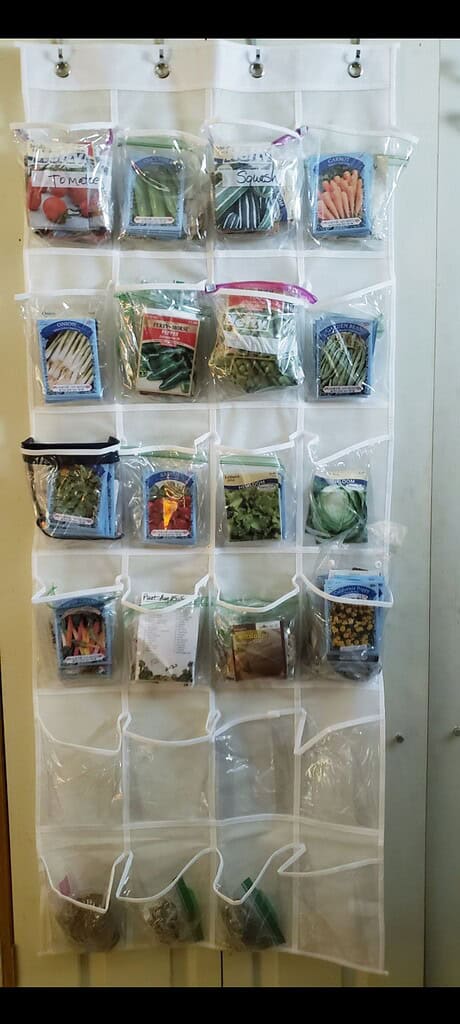
Before winter sets in, it’s helpful to take stock of what you have – and more importantly, where it all is. Cold weather, power outages, and last-minute needs can sneak up fast.
Having your supplies organized now makes them easier to access later.
Here’s what to focus on:
- Check the pantry – rotate old jars, label preserved foods, and list what you’re low on.
- Organize tools, seeds, and materials – especially anything you'll need early in spring.
- Restock essentials like matches, batteries, lamp oil, and first aid items.
If you rely on stored animal feed, backup water containers, or emergency supplies, make sure they’re dry, sealed, and easy to reach in bad weather.
This isn’t about overhauling your entire homestead – just making sure the basics are in order so you’re not caught off guard when winter hits.
Why Fall Is the Best Time to Build These Skills
Fall brings a natural pause in the rush of summer. The growing season is slowing down, the weather is cooler, and most harvesting is either done or nearly finished.
That makes it one of the best times to focus on hands-on homesteading skills – without the pressure of planting or daily garden tasks.
Here’s why this season works so well:
- The harvest is fresh – Food preservation, seed saving, and seasonal baking are more practical when your produce is still coming in.
- Weather is more workable – Outdoor tasks like firewood prep, shelter repairs, or tool maintenance are easier in cool weather than in freezing cold or summer heat.
- It’s a natural reset point – As the year winds down, it’s easier to reflect, plan, and make thoughtful decisions about what to change or improve.
- You have time indoors – Shorter days and colder evenings are a good fit for indoor projects like soap making, organizing supplies, or prepping for next year.
Instead of waiting until spring to get organized or try something new, fall gives you a head start – with enough breathing room to learn at your own pace.
How to Prioritize These Skills Based on Your Experience
Not every homesteader is at the same stage, and trying to learn everything at once can lead to burnout.
The best approach is to focus on a few skills that match your current experience, available time, and the needs of your homestead.
If You’re Just Getting Started
Focus on basic, high-impact tasks:
- Freezing produce or water-bath canning – simple and quick to learn.
- Cleaning and storing tools – helps you preserve what you already have.
- Baking with seasonal ingredients – no special equipment needed.
- Organizing your supplies – saves time later when things get hectic.
These are all low-risk skills that don’t require a lot of setup but still make a big difference.
If You’re More Experienced
Take on skills that require more time or planning:
- Pressure canning soups or broth
- Saving seeds from multiple crops
- Planning infrastructure upgrades like compost bins, fencing, or perennial beds
- Firewood prep if you heat with wood or want to rely less on electricity
These projects build toward longer-term self-sufficiency and are easier to manage when your foundation is already in place.
Choose a Few Skills and Get to Work Before Winter Hits
Fall gives you the space to slow down and focus on the kind of work that sets your homestead up for a smoother winter and a better spring.
Whether you’re canning apples, stacking firewood, or cleaning your garden beds, the work you do now makes a real difference later.
You don’t need to tackle everything on this list – just choose a few skills that match your experience and goals. Start small, do it well, and build on it each year.
What are you focusing on this fall? Comment down below and share your goals or ask a question – I’d love to hear what you’re working on.
FAQs
How can I tell if my firewood is seasoned enough to burn this winter?
Look for cracks in the ends, a lighter weight compared to green wood, and a hollow sound when knocked together. Properly seasoned wood also burns without hissing or excessive smoke.
What’s the best way to keep animal water from freezing in cold weather?
Use heated waterers or place rubber bowls in sunny spots during the day. You can also rotate fresh water more often or insulate buckets with straw or foam.
Can I still plant anything in the garden during the fall?
Yes – garlic, onion sets, and some cover crops like winter rye or clover can be planted in fall and will be ready or thriving by early spring.
How do I store saved seeds so they last until next spring?
Keep them dry, cool, and in the dark. Store in paper envelopes or glass jars with a silica packet if needed. Avoid plastic bags if moisture might be an issue.
What’s the easiest way to learn soap making without buying a kit?
Start with small cold-process recipes using basic oils like olive or coconut. Look for beginner-friendly tutorials that focus on safety with lye and step-by-step mixing.
